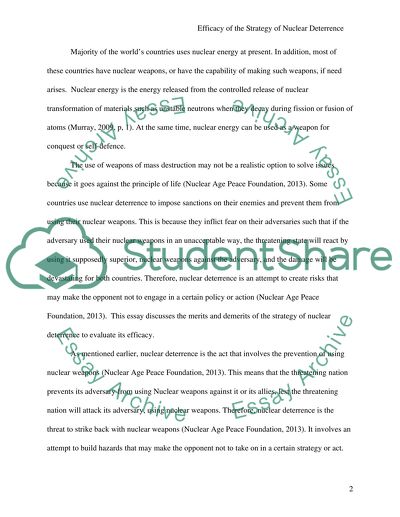Cite this document
(“How effective is the strategy of nuclear deterrence Essay”, n.d.)
How effective is the strategy of nuclear deterrence Essay. Retrieved from https://studentshare.org/military/1490624-how-effective-is-the-strategy-of-nuclear
How effective is the strategy of nuclear deterrence Essay. Retrieved from https://studentshare.org/military/1490624-how-effective-is-the-strategy-of-nuclear
(How Effective Is the Strategy of Nuclear Deterrence Essay)
How Effective Is the Strategy of Nuclear Deterrence Essay. https://studentshare.org/military/1490624-how-effective-is-the-strategy-of-nuclear.
How Effective Is the Strategy of Nuclear Deterrence Essay. https://studentshare.org/military/1490624-how-effective-is-the-strategy-of-nuclear.
“How Effective Is the Strategy of Nuclear Deterrence Essay”, n.d. https://studentshare.org/military/1490624-how-effective-is-the-strategy-of-nuclear.


